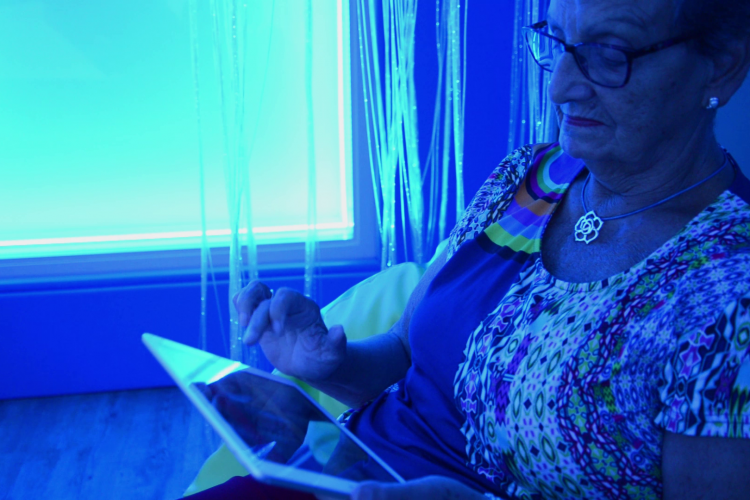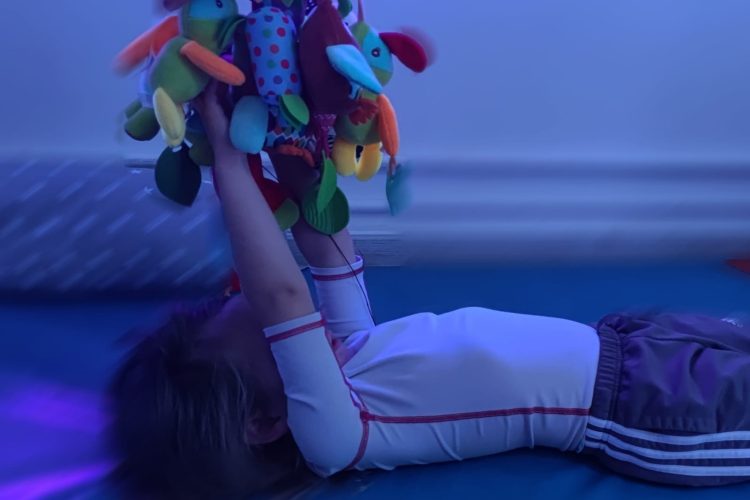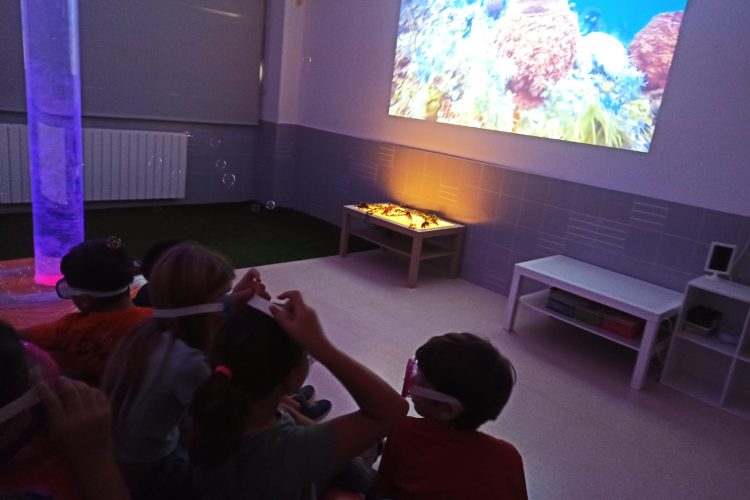Recently, the care home De Stichtse Hof, part of Vivium Zorggroep, inaugurated a brand new multisensory room with the interactive Qinera technology. This technology combines traditional multisensory materials with interactive elements, stimulating interaction among users, caregivers, and their environment.
RdgKompagne is the Dutch reseller for Qinera interactive technology and was extensively involved in designing the room. This sensory room marks a first for the Netherlands: such multisensory rooms haven’t been implemented in care homes for people with dementia before. Eager to hear about the initial experiences, our partner sat down with Wilma Post, the driving force behind the realization of this inspiring multisensory room.
“In a traditional sensory room, users passively undergo the activities. In a room with Qinera technology, it is the users who take over, using different controllers to operate the devices, sounds, projections, and effects in the room.” – RdgKompagne team
The importance of interactivity in a multisensory space to enhance enjoyment of life
Wilma is a member of the management team and coordinator of “Team Leefplezier”. This intriguing team name is unique to the Vivium Zorggroep. Leefplezier essentially means “Enjoyment of Life”. According to Wilma, Vivium pays a lot of attention to ensuring their residents experience enjoyment throughout the stages of dementia. Vivium even employs two staff members dedicated specifically to raising funds for this purpose.
“We try to closely observe what people need to enhance their enjoyment of life.” – Wilma
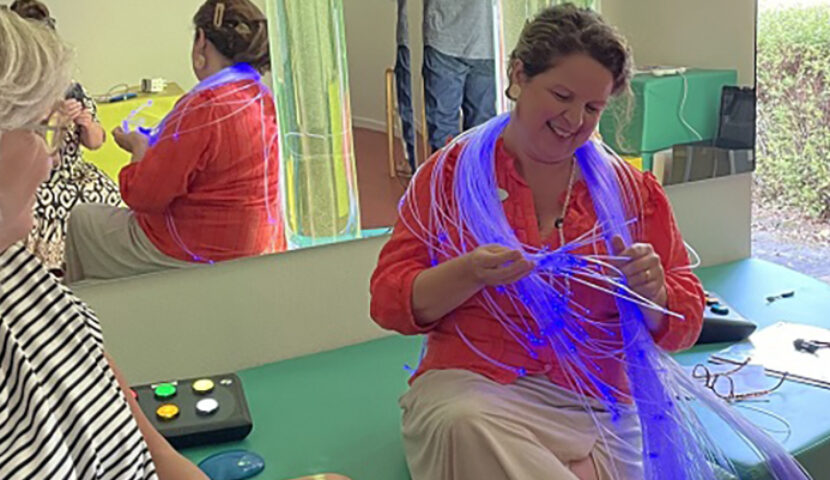
Wilma enthusiastically talks about the new SHX multisensory room: “At my previous workplace, I already had ideas about using moving images, sound and light. I had a projector installed there, and I could play music, but there was no possibility to combine the two. Back then I already imagined that if I was ever given a second chance to design a similar room, I would try and find a system that would be able to connect all the elements. So that you could give all your attention to the resident without having to worry about the technical stuff. The SHX system is exactly what I already had in mind all those years ago.“
Giving control back to people with dementia
According to Wilma, the main difference with a traditional sensory room is that people can influence their environment themselves, but they’re also being challenged. This makes them come out of their shell. When people find that they’re able to control the bubble tube with a big button all by themselves, they’re truly in wonder about that, and no longer concerned with the limitations of their dementia. They’re once again, just for a short while, back in control of things. In a traditional sensory room, users are only passively experiencing all the activities.
For Wilma, this was the main consideration for pushing for an SHX multisensory room. She explains: “If you suffer from dementia, many aspects of life are decided for you, and you’re largely dependent on caregivers. Your world becomes very small. While part of what defines being human is that you can think and act out of your own free will. If that becomes difficult, but you’re still able to act and also able to recognize the result of those actions, then that’s a very precious experience. You can truly connect with someone by actually doing something together, not by letting someone passively experience activities. That’s why it’s more difficult to establish a connection with someone in a traditional sensory room.”

Wilma’s team wants to give back a certain level of control to people in the SHX multisensory room. They do this, for example, by letting them influence the colors of the bubble tube or by letting them start a video. But also by enabling them to influence the experience itself. Wilma continues: “We want to give people the opportunity to relive their own memories, for instance by using their personal pictures of a trip to Paris in a slideshow, while serving them some French cheese. I believe that if you hand over as much control over the interpretation of the experience as possible, you not only activate people, but you also enable their inner feelings to resurface. Obviously taking into account what people are still capable of themselves. That’s what we aim for with our team; helping people to experience the sparkle of life, even if it’s for a brief moment. Having to live in a care home and suffering from dementia isn’t easy, despite the fact that everybody tries to make life as enjoyable as possible. In this multisensory room, people are able to briefly return to their memories, go back in time, and bring back feelings from long ago”.
“We try to give people back their dignity by offering them a multisensory experience and bring their strength back to the surface.”
A valuable asset for all stages of dementia
Wilma enthusiastically explains what she has in mind with the Qinera’s interactive room stating that recently, we visited a riding school with a resident who worked with horses all of her life. She suffers from later-stage dementia and hardly ever speaks anymore. She blossomed while interacting with the horses, and her vibrant personality resurfaced. We took pictures of her at the riding school, and I created a slideshow with these which she can enjoy with her family in the multisensory room. Thanks to the SXH system, we can create a fully immersive experience for her with soft colors, beautiful music, and we will also give her a photo album. With projects like these, we try to establish a connection between the experience inside the multisensory room and the outside world. It enables us to give people back their dignity and bring their strength back to the surface.
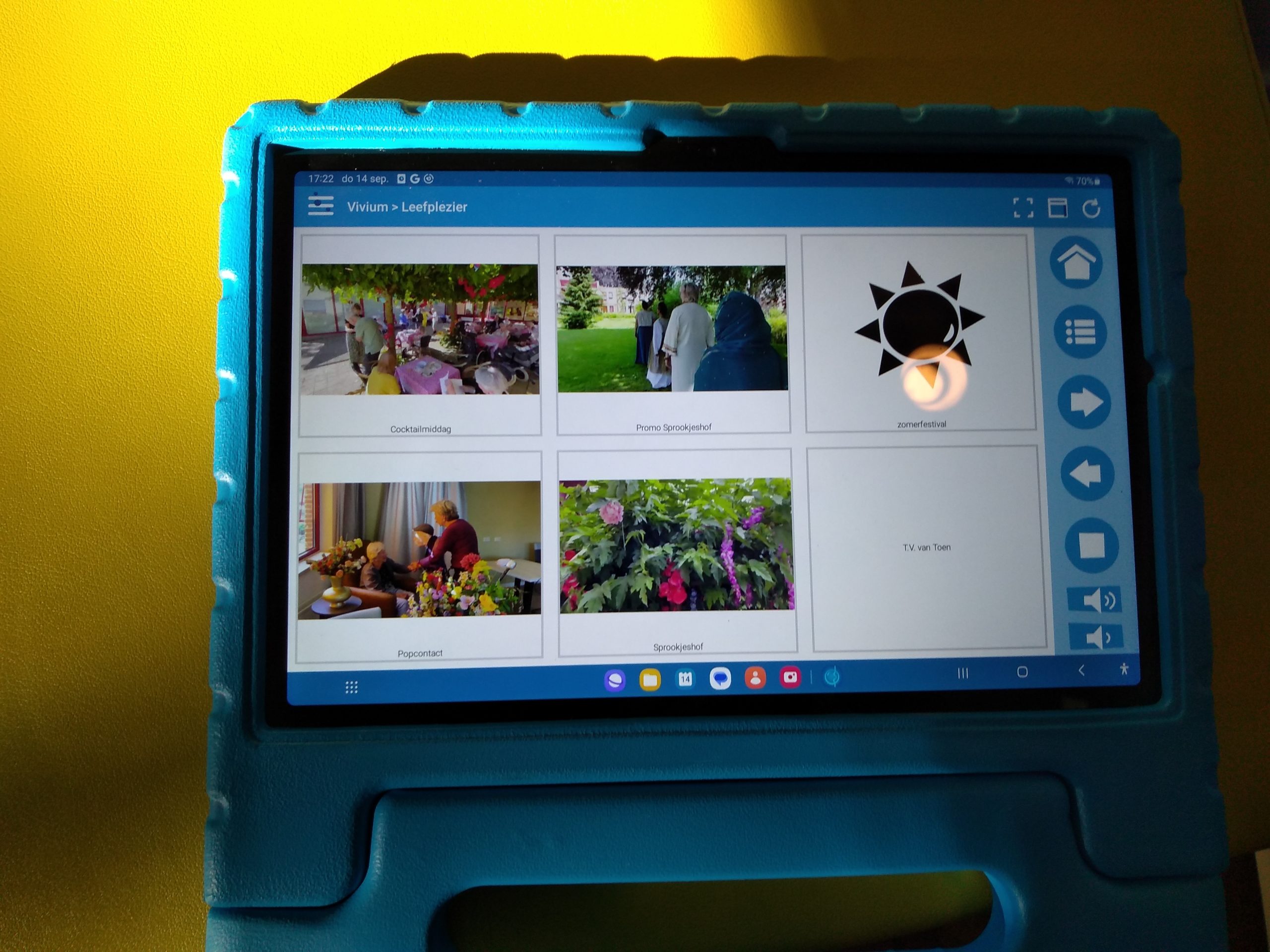
Wilma expects that this interactive sensory room will prove to be a valuable asset for all stages of dementia. Ranging from people who are still very active and get together in the room enjoying a beer and a snack, to people who are no longer able to get out of bed, or even people who are in the terminal phase. Wilma’s team would also like to work together with the spiritual caregivers on creating religious activities for the room. She is currently shooting some footage for this purpose. Even people who are in the terminal phase should eventually be able to spend their last hours enjoying the sound of the sea or images of falling snowflakes.
“It’s enormously important to be able to decide for yourself how you want to leave this life.”
The future of multisensory spaces in the center
The Qinera sensory room in this care home was made possible thanks to funding from a foundation called Stichting Vrienden van De Stichtse Hof (Friends of De Stichtse Hof Foundation). Wilma explains that it took quite some persuasion before they approved the financing for the project. A system like this has never been used for people with dementia in the Netherlands. Immersive multisensory rooms are commonly used for people with cognitive disabilities, and she was convinced that people with dementia would experience the same benefits. It took some creativity, but eventually we were able to convince everyone this was the best system to invest in, and not something more traditional. Now that the SHX system has been installed, everyone is very enthusiastic about the possibilities it offers.
“We have lots of plans for the multisensory room. Everyone is very positive and colleagues come up with their own ideas.”
Wilma has lots of plans for the multisensory room and expressed her desire to incorporate the use of the room into the care file of their residents. She emphasized the importance of family involvement in suggesting activities, such as providing pictures of grandchildren and great-grandchildren. Additionally, Wilma proposed offering vouchers for tailored activities, such as for family celebrations. Looking ahead, she outlined the team’s intention to prioritize individualized goals for residents, such as facilitating connections for those in the later stages of dementia, providing relaxation, and fostering creative pursuits.
The team noted the overwhelmingly positive reactions from colleagues, highlighting how visitors to the room are immediately inspired to engage in various activities and generate their own ideas. As people continuously explore new possibilities, they naturally begin to combine different elements. For instance, they are currently developing a plan to collect old LPs, intending to integrate them with a sensor on the Proximity switch to enable users to initiate a multisensory musical experience featuring both audio and visual elements of the artist.
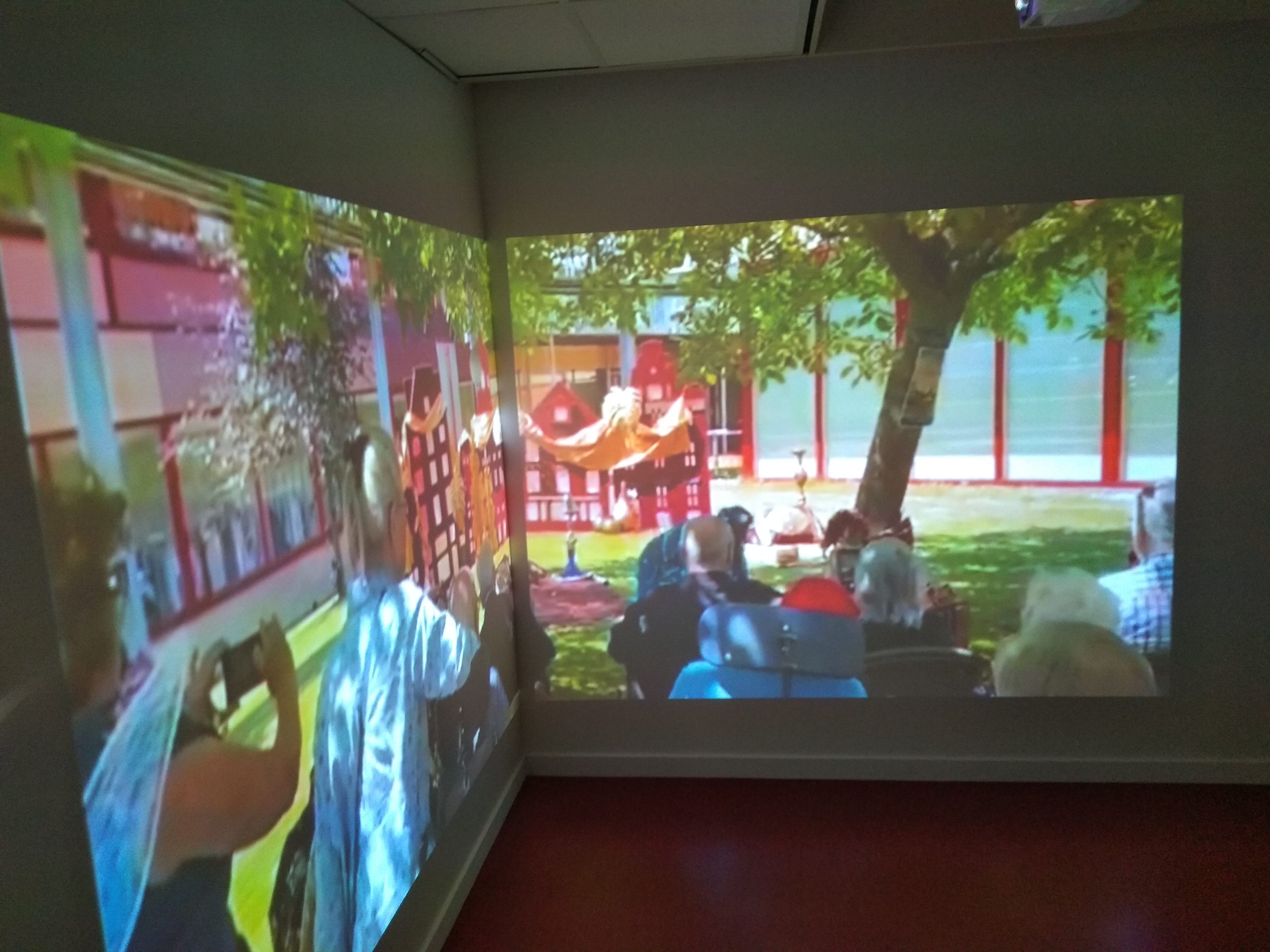
The multisensory room has been beautifully decorated. In addition to the interactive elements, the room is equipped with colorful cushions, soothing musical instruments, and scented materials. Together, these materials are used to create an immersive multisensory experience. Wilma says that depending on the activity,: “Depending on the activity, we can add other materials as well, such as sand or shells to enhance the feeling of a visit to the beach. We still have a wish list and the Stichting Vrienden van De Stichtse Hof has already indicated they want to contribute to that. Members of the foundation had the opportunity to experience the multisensory room for themselves at the festive inauguration. As a result, they understand very well how broad the applications can be. One of them described it as ‘the entire world is open to you’. Another member suggested applying for funding for a nice camera, so that we can show our residents self-made videos.”
Wilma would like to transform the entire Stichtse Hof into an immersive multisensory environment. She is convinced that ii is what their residents need.
“There’s no need to offer people activities they can’t participate in, this only confronts them with all the things they can no longer do. But in your mind you can do anything, even when you’re old and in bed. When you close your eyes, you can still jump those hurdles. And that’s what counts, because that’s what gives people joy.” – Wilma
Free Project Design
If you want to learn more about the benefits of Multisensory Environments or see how you could adapt it to your space, therapeutic goals, and users, you can send an email to hello@qinera.com.













